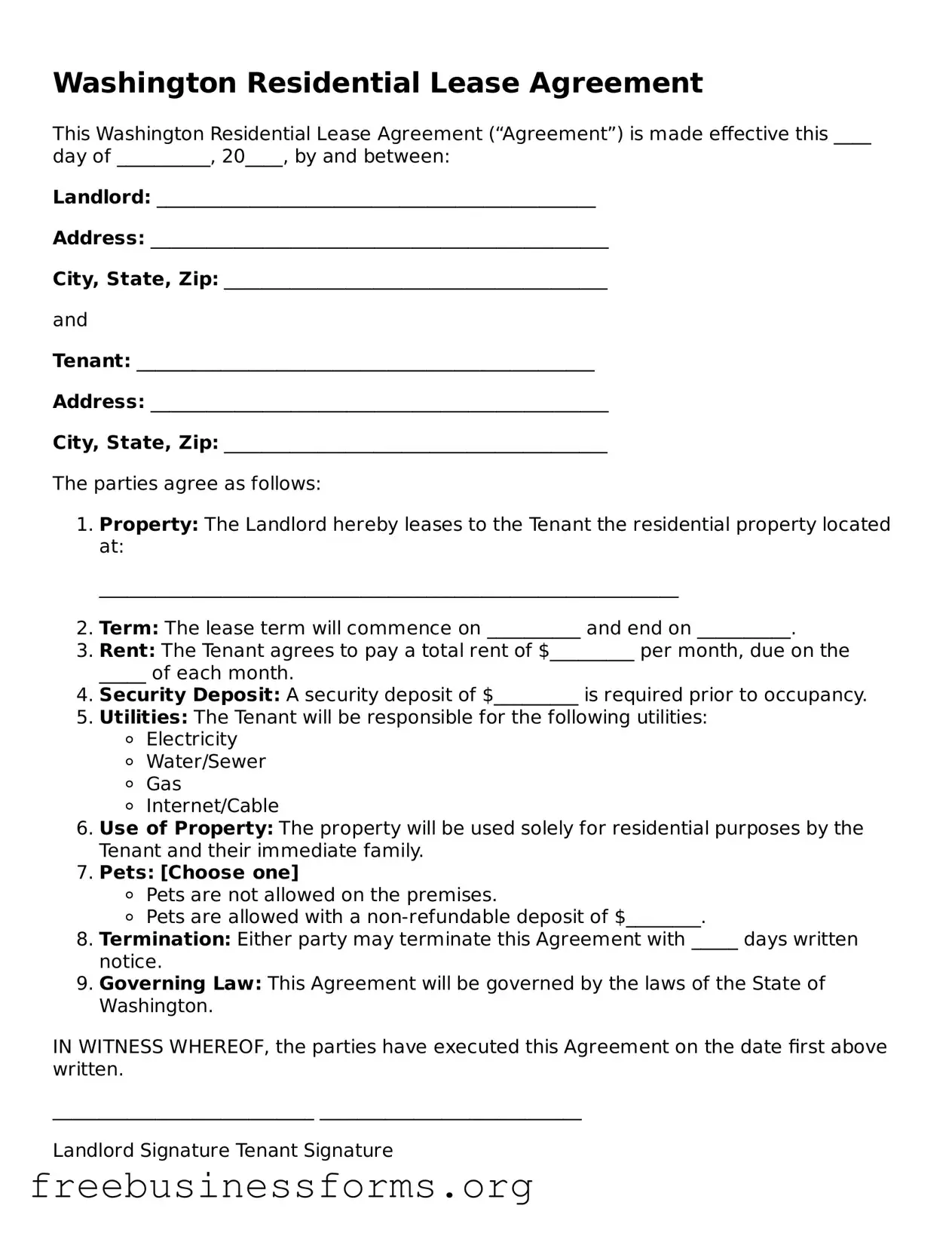Washington Residential Lease Agreement
This Washington Residential Lease Agreement (“Agreement”) is made effective this ____ day of __________, 20____, by and between:
Landlord: _______________________________________________
Address: _________________________________________________
City, State, Zip: _________________________________________
and
Tenant: _________________________________________________
Address: _________________________________________________
City, State, Zip: _________________________________________
The parties agree as follows:
- Property: The Landlord hereby leases to the Tenant the residential property located at:
______________________________________________________________
- Term: The lease term will commence on __________ and end on __________.
- Rent: The Tenant agrees to pay a total rent of $_________ per month, due on the _____ of each month.
- Security Deposit: A security deposit of $_________ is required prior to occupancy.
- Utilities: The Tenant will be responsible for the following utilities:
- Electricity
- Water/Sewer
- Gas
- Internet/Cable
- Use of Property: The property will be used solely for residential purposes by the Tenant and their immediate family.
- Pets: [Choose one]
- Pets are not allowed on the premises.
- Pets are allowed with a non-refundable deposit of $________.
- Termination: Either party may terminate this Agreement with _____ days written notice.
- Governing Law: This Agreement will be governed by the laws of the State of Washington.
IN WITNESS WHEREOF, the parties have executed this Agreement on the date first above written.
____________________________ ____________________________
Landlord Signature Tenant Signature
____________________________ ____________________________
Date Date
